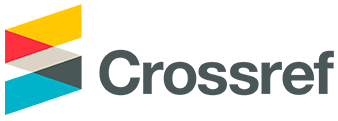EXPLORING EMOTIONS IN SCIENCE AND PHYSICS LEARNING: A COMPARATIVE STUDY BETWEEN JUNIOR AND SENIOR HIGH SCHOOL STUDENTS
Abstract
Students’ emotions play a critical role in learning. Unfortunately, emotions are frequently ignored by educators in educational practices. This study aims to explore students’ emotion during science and physics learning, with a focus on negative emotions during learning process in class. A quantitative survey design was employed. The study inlcuded second-year students from two secondary schools and two high schools in Kerinci Regency, Indonesia. The Achievement Emotions Questionnaire (AEQ) Class-Related Emotions used to collect the data. A total of 217 students (130 secondary school and 87 high school students) participated in the survey. After excluding blank, incomplete, and invalid responses, the final sample comprised 89 secondary school and 67 high school students. The finding reveled that a significant proportion of students experienced moderate (72.44%) and high (19.87%) levels of negative emotions. No students experienced very high negative emotions and 7.69% students experienced low levels of negative emotions. The findings highlight specific stronger negative emotions experinced by students including shame, anxiety, and boredom. Although no significant differences were found overall negative emotions between secondary and high school students, comparative tests were also conducted for each statement. There are 31 out of 43 that differ significantly, divided into 20 and 11 statements significantly higher for higher for secondary school students and high school students, respectively. This finding revealed that secondary school students experienced higher level of embarrassment, restlessness, and anxious. In contrast, high school students experienced more unpleasant and ashamed in the learning process. Intructional approaches should incorporate emotional intelligence and prioritizes students’ emotional needs. This approach can help minimize negative emotions during learning, thereby improving academic performance and emotional growth.
Keywords
References
Acee, T. W., Kim, H., Kim, H. J., Kim, J. I., Chu, H. N. R., Kim, M., Cho, Y. J., & Wicker, F. W. (2010). Academic boredom in under- and over-challenging situations. Contemporary Educational Psychology, 35(1), 17–27. https://doi.org/10.1016/j.cedpsych.2009.08.002
Goleman, D. (2006). Working With Emotional Intelligence. Bantam Books.
Hawkins, J. A. (2017). Feelings and emotion-based learning: A new theory. https://doi.org/10.1007/978-3-319-66056-1
Leech, N. L., Barret, K. C., & Morgan, G. A. (2005). SPSS for Intermediate Statistics. Use and Interpretation. Lawrence Erlbaum Associates, Inc. All.
Macklem, G. L., & Gayle, L. (2018). Boredom in the Classroom: Addressing Student Motivation, Self- Regulation, and Engagement in Learning. In Springer (SpringerBr). Springer.
Mayer, R. E. (2011). Applying the Science of Learning. Pearson.
Morgan, G. A., Leech, N. L., Gloeckner, G. W., & Barret, K. C. (2004). SPSS for Introductory Statistics. Use and Interpretation. Lawrence Erlbaum Associates, Inc. All.
Nilson, L. B. (2013). Creating Self-Regulated Learners: Strategies to Strengthen Students’ Self-Awareness and Learning Skills.
Pekrun, R. (2006). The control-value theory of achievement emotions: Assumptions, corollaries, and implications for educational research and practice. Educational Psychology Review, 18(4), 315–341.
https://doi.org/10.1007/s10648-006-9029-9
Pekrun, R., Elliot, A. J., & Maier, M. A. (2009). Achievement Goals and Achievement Emotions: Testing a Model of Their Joint Relations With Academic Performance. Journal of Educational Psychology, 101(1), 115–135. https://doi.org/10.1037/a0013383
Pekrun, R., Goetz, T., Frenzel, A. C., & Barchfeld, P. (2011). Measuring emotions in students’ learning and performance. Contemporary Educational Psychology, 36(1), 36–48.
Pekrun, R., Goetz, T., & Perry, R. P. (2005). Achievement emotions questionnaire (AEQ). User’s manual. In Unpublished manuscript, University of Munich, Munich (Issue 2002).
Pekrun, R., & Stephens, E. J. (2011). Academic emotions. In APA educational psychology handbook, Vol 2: Individual differences and cultural and contextual factors. (pp. 3–31). https://doi.org/10.1037/13274-001
Pranata, O. D. (2023a). Enhancing Conceptual Understanding and Concept Acquisition of Gravitational Force through Guided Inquiry Utilizing PhET Simulation. Saintek: Jurnal Sains Dan Teknologi, 15(1), 44–52. https://doi.org/10.31958/js.v15i1.9191
Pranata, O. D. (2023b). Penerapan Game-Based Learning Sebagai Alternatif Solusi Mengajar di Kelas Heterogen. Jurnal Pengabdian Al-Ikhlas, 8(3), 337–350.
Pranata, O. D. (2023c). Penerapan Puzzle-Based Learning untuk Mengajar Matematika dan Sains di Pasantren dengan Kelas Heterogen. Jurnal Penelitian Dan Pengabdian Kepada Masyarakat UNSIQ, 10(2), 109–115.
Pranata, O. D. (2023d). Physics Education Technology (PhET) as Confirmatory Tools in Learning Physics. Jurnal Riset Fisika Edukasi Dan Sains, 10(1), 29–35. https://doi.org/10.22202/jrfes.2023.v10i1.6815
Pranata, O. D., Sastria, E., Ferry, D., & Zebua, D. R. Y. (2023). Analysis of Students’ Emotional Intelligence and Their Relationship with Academic Achievement in Science. Proceedings of the International Conference on Social Science and Education, ICoeSSE, 395–410. https://doi.org/10.2991/978-2-38476-142-5
Pranata, O. D., & Seprianto, S. (2023). Pemahaman Konsep Siswa Melalui Skema Blended learning Menggunakan Lembar Kerja Berbasis Simulasi. Karst : Jurnal Pendidikan Fisika Dan Terapannya, 6(1), 8–17. https://doi.org/https://doi.org/10.46918/karst.v6i1.1724
Putri, A. L., Pranata, O. D., & Sastria, E. (2024). Students Perception of Science and Technology in Science Learning: A Gender Comparative Study. Jurnal Pijar Mipa, 19(1), 44–50. https://doi.org/10.29303/jpm.v19i1.6153
Putri, D. H., & Pranata, O. D. (2023). Eksplorasi Kejenuhan Siswa dalam Pembelajaran Sains Setelah Pandemi. Jurnal Inovasi Pendidikan Sains (JIPS), 4(2), 62–70. https://doi.org/https://doi.org/10.37729/jips.v4i2.3367
Utami, A. F., Pranata, O. D., & Angela, L. (2024). Analisis Tingkat Kejenuhan Siswa Sebelum , Selama , dan Setelah Pembelajaran Sains. PENDIPA Journal of Science Education, 8(1), 1–9. https://doi.org/https://doi.org/10.33369/pendipa.8.1.1-9
Winter, J. de, & Hardman, M. (2020). Teaching Secondary Physics. In J. de Winter & M. Hardman (Eds.), Teaching Secondary Science (3rd ed.). https://books.google.com.my/books?id=ZSoryQEACAAJ
Wulandari, W., & Pranata, O. D. (2023). Analisis Kecerdasan Emosional Siswa dalam Pembelajaran Sains. Diksains: Jurnal Ilmiah Pendidikan Sains, 3(2), 124–133. https://doi.org/10.33369/diksains.3.2.124-133
DOI: https://doi.org/10.17509/ije.v18i2.68988
Refbacks
- There are currently no refbacks.
Copyright (c) 2025 Ogi Danika Pranata

This work is licensed under Creative Commons Attribution-ShareAlike 4.0 International License.




.jpg)





